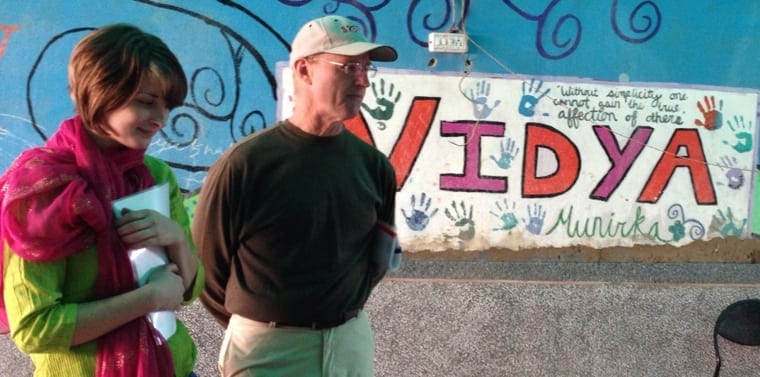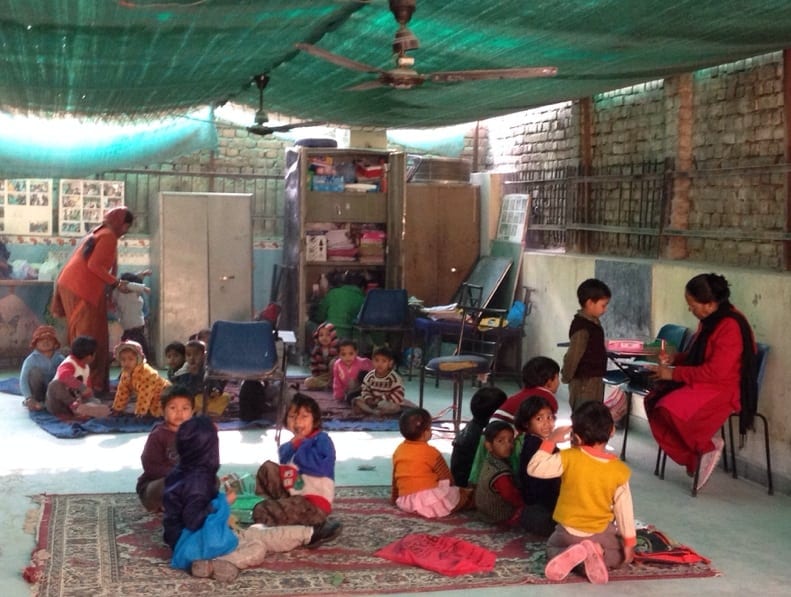Our Third Full Day in Delhi, post 1 of 2, Volunteering at Vidya
Here are two photos from our assignment. This is of Jim and Alecia.
I am exhausted tonight. Today was full, my mind was kept whirring all day. We went to our assignment, then to meet the principal of a larger school run by Vidya. After that we had lunch, a recap of the day, a Hindi lesson, a talk on women’s issues, and dinner, whew. I loved every minute of it.
My first of two posts for today have the notes from the talk. The speaker was Jaya Shrivastava. She is a social activist, a singer, and she studied English literature. She loves to revisit Shakespeare, Dostoevsky, and Hindi authors of classical writing. She is an advocate for justice and rights for all groups. She is involved with the Unkar Society of Alternatives in Education. This group promotes open inquiry learning.
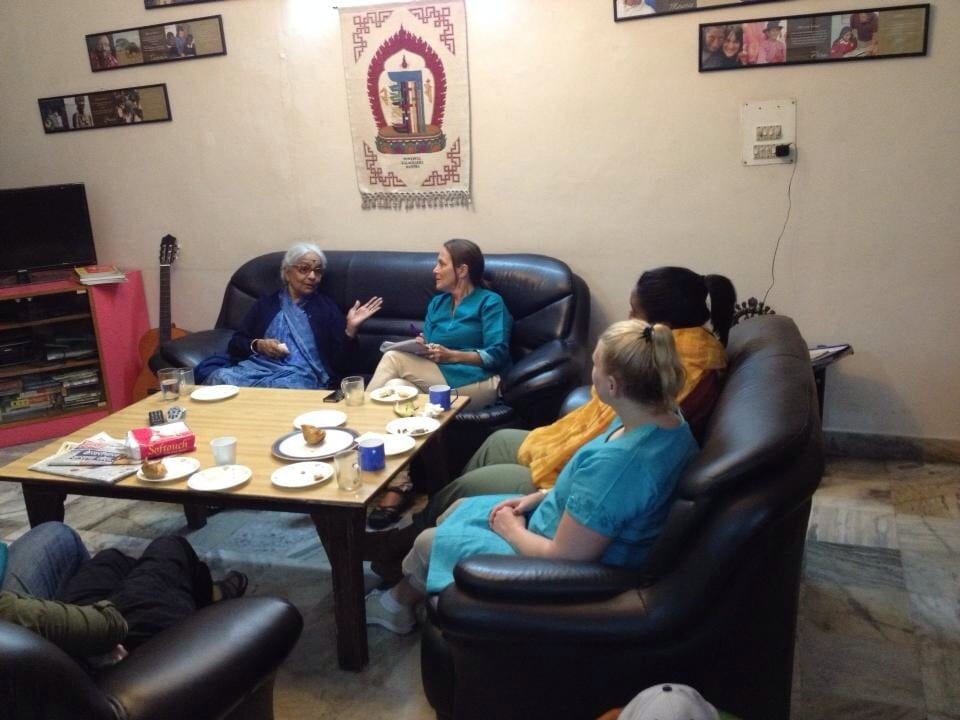
Another volunteer asked about the dots on the forehead.
The dots are part of the culture and show what god you worship. Many westerners wonder why all the different gods. A variety of gods better reflect the diversity within the human population. Hindis have a word, isht. Isht means your own god, your isht.
The strength of the Indian people is their diversity. There are 22 majors languages, and over 1000 minor languages spoken in India.
During Queen Victoria’s reign there was a national movement for independence. Gandhi was a part of this. Some of the leftist groups, not Gandhi’s, had many women in them and were very violent. The educated Indians said let’s learn from the English and model our country’s laws after theirs. This was a long time ago and many of these laws have been abolished in the UK by the British, but they are still a part of the Indian Penal Code. For example Law 377 stated that same sex relations were illegal. This law was struck down last year, but there are many that have not been.
In other ways India has been progressive, they have a history of having a high number of women in political office. The last two Indian Ambassadors to the United States have been women.
In some states it is the law that 33% of the seats must be held by women. Women gained the right to vote in 1950. India is more liberal than the US as to who can vote. If you are in jail you can vote; you can even run for office. You have to be 15+ to vote. You can be illiterate and vote.
40% of women in India are illiterate. 1/2 the children in the country are not in school. To promote the education of girls some of the states have gotten creative. In one state the government has started a Cycle Scheme. If a daughter goes to school, she gets a bike when she reaches the level of 8 or 9. In the State of Uttar Khand, if a family has only one child and it is a daughter, her entire education is paid for, even if she goes all the way through and gets a PhD.
Patriarchy must be looked at as a philosophy about a style of power structure, not as a male thing. You can think of Indira Gandhi as an amalgam of male and female. She was beautiful, petite, stern, and brave. Indira Gandhi was said to be the only man in her cabinet because she was so strong.
Jaya works mainly with small groups of women. It is an intensive 5-6 year program aimed at empowering women in remote areas. There is gender training that focuses on understanding and analyzing patriarchy, violence, and oppression against women.
This is not just a female thing though, as masculinity and femininity are present in all people regardless of their gender. Joseph Campbell is a good source for looking at the merger of the two energies. The real problem is that there is a disconnect in a paternalistic society. This leads women to accept inequity and subjugation.
Another problem in India is parents getting pregnancy tests to determine the gender of their children. This has recently been outlawed. The census data is as follows for live births: the ratio for female births to male births in India is:
In 1991: 948 females: 1000 males
In 2001: 936 females: 1000 males
In 2011: 926 females: 1000 males
The largest drop in females has been among the wealthiest families.
The extreme disparity among the rich and poor raises aspirations. In the election that was just over, the AAP, which translates to the Common Man’s Party, won 28 seats. There are 70 seats total. The Common Man’s Party will not make deals so there is going to be a problem getting things done. (That sound familiar.)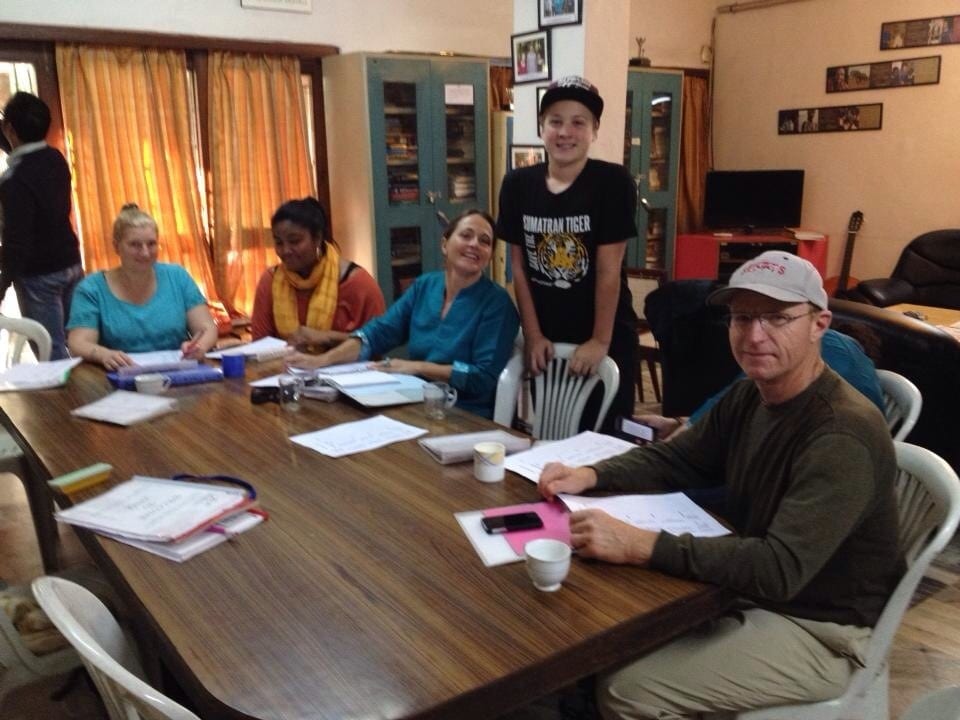
I am also uploading a video of Jaya singing a song written by Kamla Bhasin, and then I am going to sleep. I hope I can sleep as well as this fellow can.
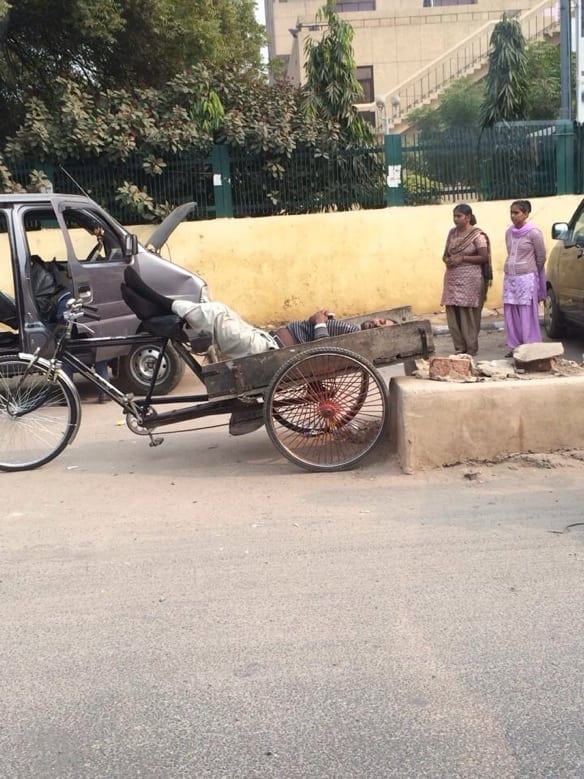
Check out part two of this blog here.


